Last week, we covered Primeval Labs Ape Sh*t Max Pump, a Nitrosigine and 3D Pump powered stim-free pre-workout supplement. Today, we get to meet its better half: the caffeinated version!
Primeval Labs Ape Sh*t Max: 400 milligrams of caffeine, but stackable to your tolerance

Prepare for 400 milligrams of MAXIMUM APE! But if that's too much, you can titrate it down and keep pumps high by stacking in some of the stim-free version!
That's right, the stimulant-based version, Primeval Labs Ape Sh*t MAX, which is quite similar to the stim-free pump version linked above... only it has caffeine and theacrine. And by caffeine, we mean a lot of caffeine - 400 milligrams!
But, since it has the same ergogenic formula as the stim-free version, you can stack the two to lower caffeine to the dose you desire, while keeping the pumps and endurance levels at maximum dosage!
Otherwise, you can treat yourself to 400 milligrams of energetic goodness, and let the inner ape out for a maximum-powered, Nitrosigine and 3D Pump inspired pre workout.
We've got the full analysis below, but that's the short story. Let's check stock and availability, sign up for Primeval Labs news alerts, and get to the good stuff:
Primeval Labs Ape Sh*t MAX Pre-Workout – Deals and Price Drop Alerts
Get Price Alerts
No spam, no scams.
Disclosure: PricePlow relies on pricing from stores with which we have a business relationship. We work hard to keep pricing current, but you may find a better offer.
Posts are sponsored in part by the retailers and/or brands listed on this page.
This area is reserved for Team PricePlow's upcoming Product Comparison video.
Subscribe to our channel and sign up for notifications so you catch it when it goes live!
Primeval Labs Ape Sh*t Max Ingredients
In a single 2-scoop serving of Ape Sh*t Max, you get the following:
-
3D Pump Breakthrough [L-Citrulline (Vegan Fermented), Glycerol, Amla (Emblica officinalis) (fruit) extract] – 6,000 mg
3D Pump Breakthrough is an ergogenic ingredient blend that consists of L-citrulline, glycerol, and amla fruit extract.
Citrulline is here to boost nitric oxide (NO) production, while amla improves blood flow and glycerol increases cellular hydration. The upshot of all this is insane pumps and a boost in performance.
Pilot Study
The 3D Pump Breakthrough patent cites a rigorous preliminary study (or pilot study) that was designed to illustrate how this ingredient works to increase your power during a workout.
The study was conducted in resistance-trained men with an average age of 28. Although the sample size was somewhat small, the study used a repeating design in which the volunteers were able to serve as their own controls.[1] Each one completed identical workouts on four separate days, taking one of four treatments per day:
- Water (placebo)
- 1.5 grams of glycerol
- 150 milligrams of amla fruit extract
- 1.5 grams of glycerol and 150 milligrams of amla fruit extract
The workout performed on all four days was identical — a combination of leg extensions and weighted goblet squats. Each exercise was performed for three sets of 10-12 reps. Subjects rested for 1 minute between sets and 2 minutes between exercises.
After every training session, subjects' thigh circumference was scanned using a DEXA imaging machine, and recorded as a proxy measure for cellular hydration.
Not surprisingly, some increase in leg size and lean body mass was observed after each workout, but the workouts performed after treatment with a combination of glycerol and amla yielded a greater increase than the other two treatments and the placebo.
Glycerol together with amla caused a 2.21-centimeter increase in thigh circumference and a 693.1-gram increase in lean body mass. By comparison, the workout after treatment with placebo (water) only caused a 1.12-centimeter increase in thigh circumference and a 30.4-gram increase in lean body mass.[1]
One of the most striking findings in this study is that the amal-only group did better than the glycerol-only group. That's really saying something about amla since glycerol's bona fides as a cellular-hydration ingredient are long-established.
-
Amla: What it is and how it works
Phyllanthus emblica, also known as amla, has been used in Ayurvedic medicine for millennia.[2] Traditionally, amla was given to patients with circulatory and cardiovascular problems, and as is often the case, the latest scientific research has validated this ancient wisdom. The unique antioxidant profile of amla seems to improve endothelial function while reducing platelet aggregation.[3]
Low molecular weight tannins: ATP boosters
The amla extract used in 3D Pump Breakthrough is standardized for at least 68% low molecular weight tannins (LMWTs) by weight.
The LMWTs include emblicanin-A, emblicanin-B, punigluconin, and pedunculagin.[4] These tannins are metabolized into urolithins A, B, C, and D,[5] which have been shown to boost mitochondrial health.[6]
Mitochondrial health is a big deal since mitochondria are responsible for producing adenosine triphosphate (ATP), your body's energy. Since ATP is required for and consumed by every metabolic process in your body, ATP levels are correlated with athletic performance and overall health.[7,8] Urolithin B may also have anabolic properties.[9]
Amla extracts might have nootropic effects too,[10] an undeniable bonus, if it turns out to be true.
-
L-Citrulline
Citrulline is a non-essential amino acid, meaning your body can synthesize it on its own. However, your body can only produce so much, so taking extra can have health benefits. Specifically, citrulline is an arginine precursor, which is important because arginine is, in turn, a precursor to the gas nitric oxide (NO). Citrulline supplements can upregulate NO production[11] by raising arginine blood levels.[12]
Citrulline combined with arginine dramatically outperformed either amino acid in isolation.[13] With the combination of Nitrosigine (inositol-stabilized arginine silicate) also in here, we have a similar (and we'd argue better) but not identical situation.
Since arginine is the target of citrulline supplementation, it seems obvious that supplementing directly with arginine might be a more effective method for increasing NO. However, for reasons that are pretty complicated, citrulline is actually more effective than arginine.[14-16]
If you're curious to know why, read through to the end – we discuss this topic in-depth in the Nitrosigine section later in the article.
Higher NO levels are good for a number of reasons, all related to the ability of the gas to induce vasodilation, a physiological response in which blood vessels expand and increase blood flow. In athletic settings, vasodilation can lead to better performance during exercise[13,17] and faster recovery afterwards.[18]
Studies have consistently found that citrulline supplementation leads to benefits associated with increased NO production.[19-21] A meta-analysis of 13 peer-reviewed studies on citrulline concluded that it can reduce rated perceived exertion (RPE) during exercise and decrease soreness after exercise.[22]
That meta-analysis found the typical effective dose of citrulline used in these studies was 8 grams of citrulline malate,[22] which is actually less citrulline than included in a 2-scoop serving of Ape Sh*t Max.
-
Glycerol: Cellular hydrator
Glycerol is an osmolyte, meaning that it can increase the body's total water volume[23] by increasing cellular water retention. This leads to hyperhydration,[24] a state in which your cells' increased resistance to stress, and particularly heat stress, can boost athletic endurance.[25-27]
Just remember that in order for this process of hyperhydration to work, you have to give your body lots of water to work with – so if you're taking glycerol, drink up.
If you want even more details on glycerol, check out Glycerol: The Ultimate Guide for Hydration, Heat Protection, and Pumps.[28]
Breaking News: Since the original release of this article, a groundbreaking study on 3DPump has come out. Learn all about it in our 2023 3DPump Study article.
-
Beta Alanine – 3200 mg
Beta-alanine, another non-essential amino acid, is a carnosine precursor.[29] We at PricePlow love carnosine because of its ability to buffer the accumulation of lactic acid in your muscles, thus increasing athletic endurance, because the accumulation of lactic acid is a primary cause of muscular fatigue and failure.[30]
Lots of research has been done on beta-alanine. So much so, in fact, that two large meta-analyses on the compound were published just four years apart – one in 2012 and one in 2016. Both concluded that performance of any exercise between 30 seconds and 10 minutes in duration can be improved by beta-alanine supplementation.[31,32]
This is why we call beta-alanine an ergogenic aid – it has the ability to increase your capacity for physical work. Other prominent examples of ergogenic aids would be creatine, caffeine, and betaine, which we'll actually be discussing in the next section.
Don't fear the tingles!
Some people, upon taking beta-alanine, may experience tingles in the neck, shoulders, and arms. This can alarm people who haven't dealt with it before, but there's no need to be afraid of the sensation – a 2019 safety review concluded that beta-alanine is safe and "does not adversely affect those consuming it."[33]
-
Betaine anhydrous – 2500 mg
Betaine is the common name for trimethylglycine (TMG). As we said above, betaine is an ergogenic aid, meaning it can increase your capacity to perform physical work.
Betaine works partly by donating methyl groups to other molecules that require them to carry out metabolic processes. As an example, consider the way betaine can reduce homocysteine blood levels[34] by donating methyl groups to the homocysteine cycle. This matters because high homocysteine levels are associated with cardiovascular disease.
Much like glycerol, betaine is an osmolyte that helps improve cellular hydration. By moving more water and nutrients into your cells, betaine can optimize the functioning of those cells while protecting them from heat stress,[35-37] which can be a concern during intense exercise.
While there's tons of research supporting the use of betaine as an ergogenic aid,[38-43] we want to focus on two important studies, one from 2013 and the other from 2014. Both found that supplementing with 2.5 grams of betaine per day for six weeks can lead to 5.3 pounds of lean mass gain and 6.4 pounds of fat loss.[35,44] That's a whopping 3% reduction in body fat in those individuals.
This clinically-validated dose of 2.5 grams is exactly the dose in Ape Sh*t Max! Be sure to use the 2-scoop serving to get this dose.
-
L-Tyrosine – 2000 mg
It's easy to see why we like tyrosine so much - its derivatives bring the intensity and focus! Image courtesy Wikimedia
Tyrosine is an essential amino acid, meaning that unlike citrulline and beta-alanine, your body cannot make it on its own. You must obtain tyrosine from food or supplements.
As a precursor to dopamine, adrenaline, and other neurotransmitters,[45] tyrosine supplementation can help improve your focus and alertness. By increasing your levels of these neurotransmitters through tyrosine supplementation, you can potentiate your sympathetic nervous system, which controls the "fight-or-flight" response that helps us exercise.
Tyrosine is especially useful if you've had poor sleep. Studies have repeatedly found that sleep-deprived individuals perform better on cognitive tests after taking supplemental tyrosine.[46,47]
-
L-Taurine – 2000 mg
Taurine is an osmolyte like betaine and glycerol. This amino acid is neither essential nor non-essential. Instead, it is conditionally essential, meaning that your body can make some taurine on its own, but it can't necessarily make enough to meet all your metabolic needs, specifically when you're sick or stressed.
As an osmolyte, taurine can increase athletic endurance[48] for reasons we've discussed above. It also has antioxidant effects, can help muscles contract by facilitating calcium signaling, and helps your body burn fat.[48-51]
A 2018 meta-analysis concluded that even just 1 gram of taurine can acutely increase athletic endurance.[48] That's pretty good news considering that you're getting 2 grams in the 2-scoop serving of Ape Sh*t Max.
Taurine may also boost cognition[50] and upregulate NO,[51] making it a perfect ingredient for pre-workout formulas. Finally, the research literature indicates that a 2-gram serving of taurine may boost mitochondrial function.[52]
-
Inositol-stabilized Arginine Silicate (as Nitrosigine) – 1500 mg
Remember how we said in the Citrulline section that pure arginine wasn't as good as citrulline for raising NO levels? Here, we explain how it works.
Yes! We have a full 1.5g dose of Nitrosigine for long-lasting pumps, endurance, and even some focus effects!
Nitrosigine was basically designed to be an improved form of arginine. Nutrition 21 figured out that by chemically binding arginine to inositol and potassium silicate,[53] they could prevent arginine from breaking down in the stomach before it's absorbed into the bloodstream – a phenomenon known as the "first pass effect."[54,55]
By inhibiting arginase, the enzyme responsible for degrading arginine in the stomach, Nitrosigine ensures that more of the ingested arginine makes it into the bloodstream where it can actually affect NO production.[54] In other words, arginine from Nitrosigine is more bioavailable than pure arginine.
Nitrosigine acts quickly, and for a long time – NO levels begin to rise about 30 minutes after consuming Nitrosigine, and stays elevated for up to 6 hours.[56,57]
If you've read the full article up to this point, you already know that higher NO levels means better athletic performance[58,59] and faster recovery.[59,60] But in addition to the usual benefits of NO boosters, Nitrosigine has also been shown to have nootropic properties.[61] In particular, it can help mitigate the temporary cognitive impairment that is caused by intense exercise,[62] speed-up multitasking,[63] and increase energy levels.[56]
A nitric oxide booster that improves cognition?! Yes - Nutrition21 passed around this helpful infographic after the Nitrosigine cognition study on healthy young adults was published.[61]
In other words, you'll get less intense "bonking" after training.
Awesome new research comes out on Nitrosigine every year, consolidating the ingredient's status as a premier NO booster.
If you want to learn more about Nitrosigine, check out our article, Nitrosigine: The Nitric Oxide Booster That Enhances Brain Function.
-
Choline Bitartrate - 1,000 mg
Choline is an essential nutrient, meaning your body must meet its choline requirements through diet.
The primary function of choline is to help your body maintain its cellular membranes.[64] It's also an important precursor to acetylcholine, a neurotransmitter that is absolutely indispensable for efficient learning and memory consolidation.[65] Having more acetylcholine improves many aspects of cognition, ranging from working memory to balance and coordination.[66,67]
Supplemental choline is almost always welcome because choline deficiency is potentially catastrophic. It can cause severe cognitive dysfunction, muscle wasting, and organ damage, including non-alcoholic fatty liver disease (NAFLD).[68]
Statistics indicate that only 10.8% of Americans over the age of two get enough choline on a daily basis.[69] So, technically speaking, the odds are that you could benefit from choline supplementation.
-
Caffeine Anhydrous – 400 mg
What else did you expect from a supplement named Ape Sh*t MAX?! A heavy hit of energy!
Need a quick one with high caffeine on the go? Forget the days of boring RTD flavors like grape and fruit punch - Primeval Labs really knocked the ready-to-drink pre workout flavors out with Ape Sh*t Untamed RTD!
Caffeine is great at burning fat, increasing energy levels, suppressing appetite, and increasing thermogenesis.[70,71] It works by inhibiting adenosine and phosphodiesterase.[70,71]
Adenosine is a molecule that causes fatigue when it accumulates in your brain by slowing the activity of your neurons.[70,71] Caffeine blocks the adenosine receptor, thus preventing the adenosine in the brain from exerting its usual effect.
Phosphodiesterase is an enzyme that degrades cyclic adenosine monophosphate (cAMP),[70,71] a messenger molecule that facilitates the burning of both fat and carbohydrates. By inhibiting phosphodiesterase, caffeine upregulates cAMP, thus making more energy available to your body for workouts, or just ordinary non-exercise activities.[72]
Because of these effects, caffeine is considered an ergogenic aid, and caffeine consumption is strongly associated in the research literature with increased athletic performance.[73]
Note: 400 milligrams of caffeine is a large dose. If you aren't sure whether you can tolerate this much caffeine at once, you should start with a 1-scoop serving of Ape Sh*t Max, or perhaps even a smaller fraction of a scoop and work your way up to the full 2 scoops.
Remember, you can stack with Ape Sh*t Max Pump, a nearly identical (yet stimulant-free) formula to keep the pumps high, but titrate the caffeine down. Many will love ~1.5 scoops of Ape Sh*t Max stacked with ~0.5-1 scoops of Ape Sh*t Max Pump.
-
Ancient Peat; Apple Extract (ElevATP) – 150 mg
ElevATP is a blend of extracts from peat moss and apples that can boost extracellular ATP levels.[74] Recall from our discussion on amla that having adequate ATP is crucial for optimal health and metabolic function.
A study published in 2016 found that subjects who took 150 milligrams of ElevATP daily saw better improvements in their one-rep max for squats and deadlifts compared to subjects who took a placebo.[75] Increases were also observed in their vertical jump velocity and power.[75]
Fortunately for us, that's the same dose contained in 2 scoops of Ape Sh*t Max!
-
Green Coffee Bean Extract, Green Tea Extract, Turmeric Extract, Tart Cherry, Blueberry, Broccoli, Kale (S7) – 100 mg
Going stim-free? Primeval Labs Ape Sh*t MAX Pump is going all-in on stim-free pumps, focus, and strength!
The S7 blend of botanical extracts is designed to boost NO bioavailability – a sensible ingredient to stack with a bunch of NO-boosting ingredients! While the other ingredients increase NO production, S7 may help your body use a larger amount than it otherwise would.
In one study, S7 was found to increase NO bioavailability up as much as 230%.[76]
-
Theacrine (as TeaCrine) – 50 mg
Theacrine can help increase mental and physical energy[77] in much the same way as caffeine, theacrine's chemical cousin.[78] Just like caffeine, theacrine fights fatigue by blocking adenosine receptors.[79] Theacrine can also activate dopamine receptors, potentially increasing motivation and focus.
This adds just a bit more long-lasting power to the caffeine, and is the other ingredient that's not in the stim-free Ape Sh*t Max Pump version.
Flavors Available
Many know Primeval Labs as the flavor kings:
The stacking situation: Titrate caffeine with Ape Sh*t Max Pump!
Above in the caffeine section, we discuss the massive 400 milligram strike of caffeine you're getting in Ape Sh*t Max. Not everyone wants that, so you can always take just one scoop (200 milligrams of caffeine) or ~1.5 scoops to get closer to the "standard" 300 milligrams of caffeine.

Primeval Labs Ape Sh*t Test is the first non-pre-workout supplement in the series, so it can be stacked with the others to amplify test!
However, not all pumps are lost -- wherever you reduce scoop size here, you can increase scoop size with the stimulant-free Ape Sh*t Max Pump to keep everything else at a full dosage! As long as you get 2 scoops total between the two supplements, you're good to go on these dosages.
Alternatively, you can also consider stacking with the standard Ape Sh*t Pumps (a bit less strong, but more economical), or use the Nitrosigine-powered VasoGorge.
In summary, the sky's the limit with the line from Primeval, but we like trying the 2-scoop-total strategy between the two Ape Sh*t Max products. It's great to see wisely formulated product series that give you a chance to get the stim dose you want while also getting clinical doses of everything else.
Primeval Labs Ape Sh*t MAX Pre-Workout – Deals and Price Drop Alerts
Get Price Alerts
No spam, no scams.
Disclosure: PricePlow relies on pricing from stores with which we have a business relationship. We work hard to keep pricing current, but you may find a better offer.
Posts are sponsored in part by the retailers and/or brands listed on this page.
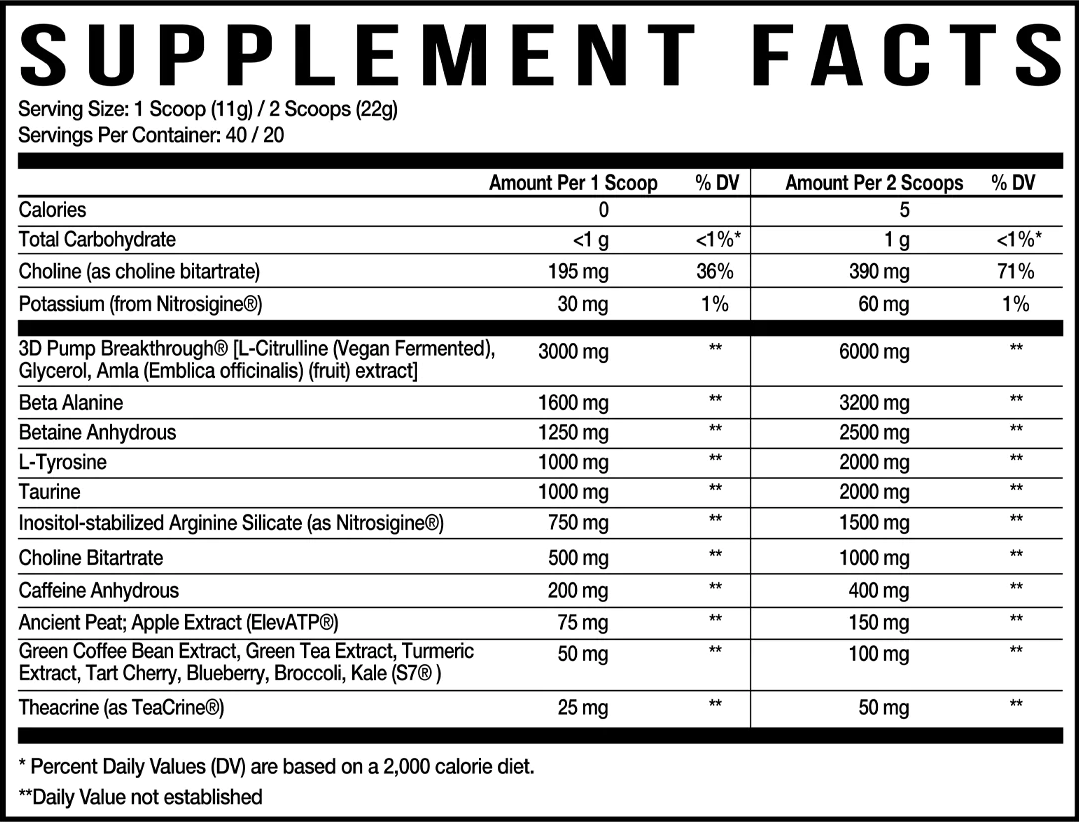
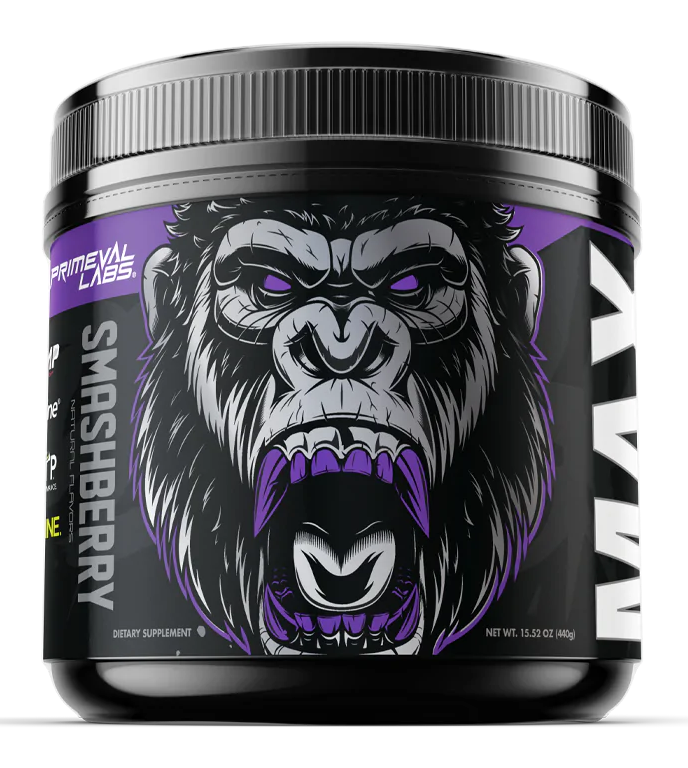

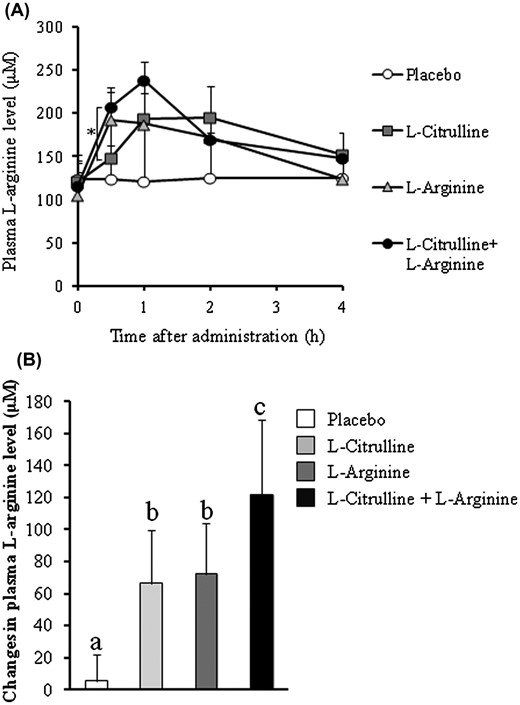
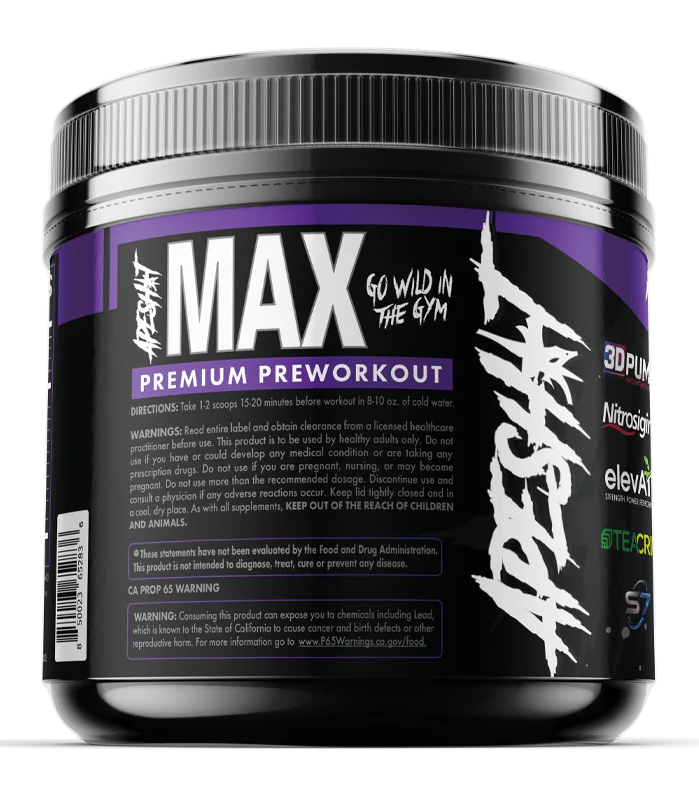
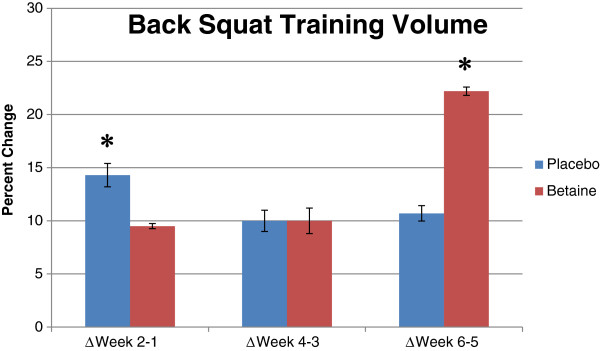
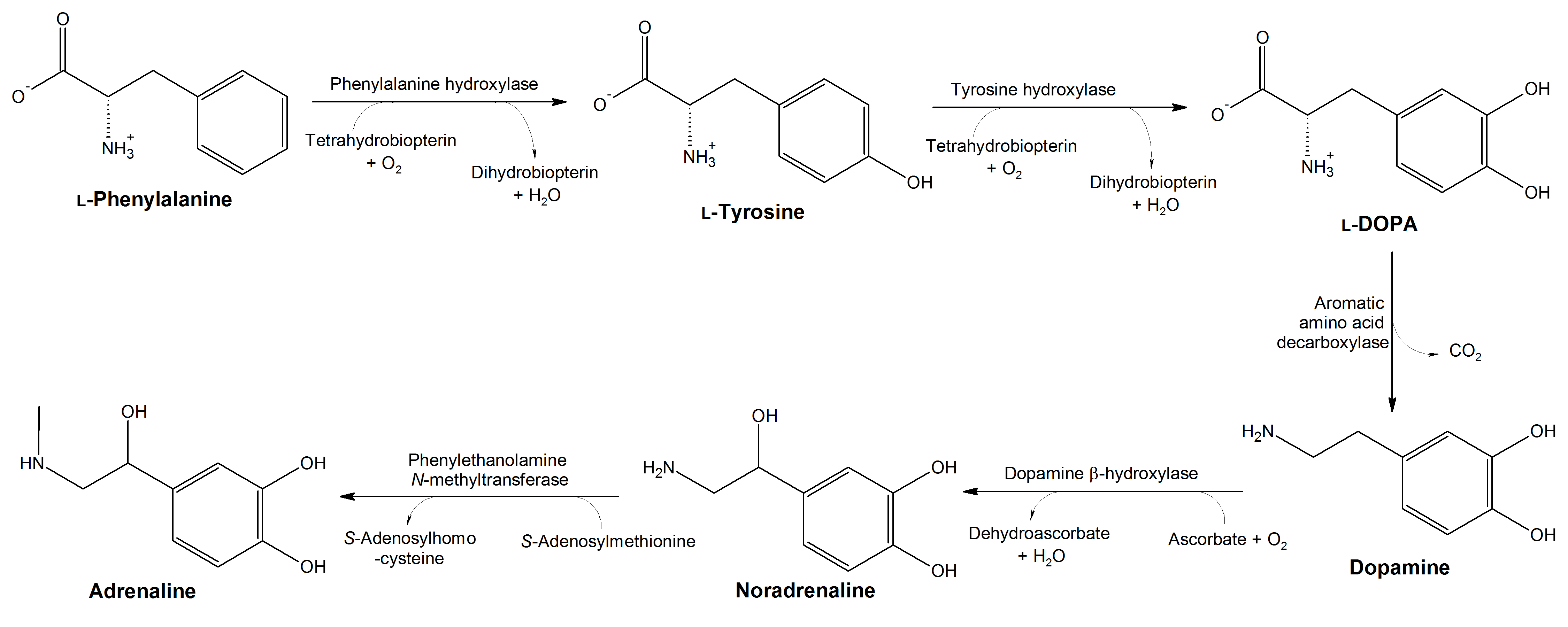

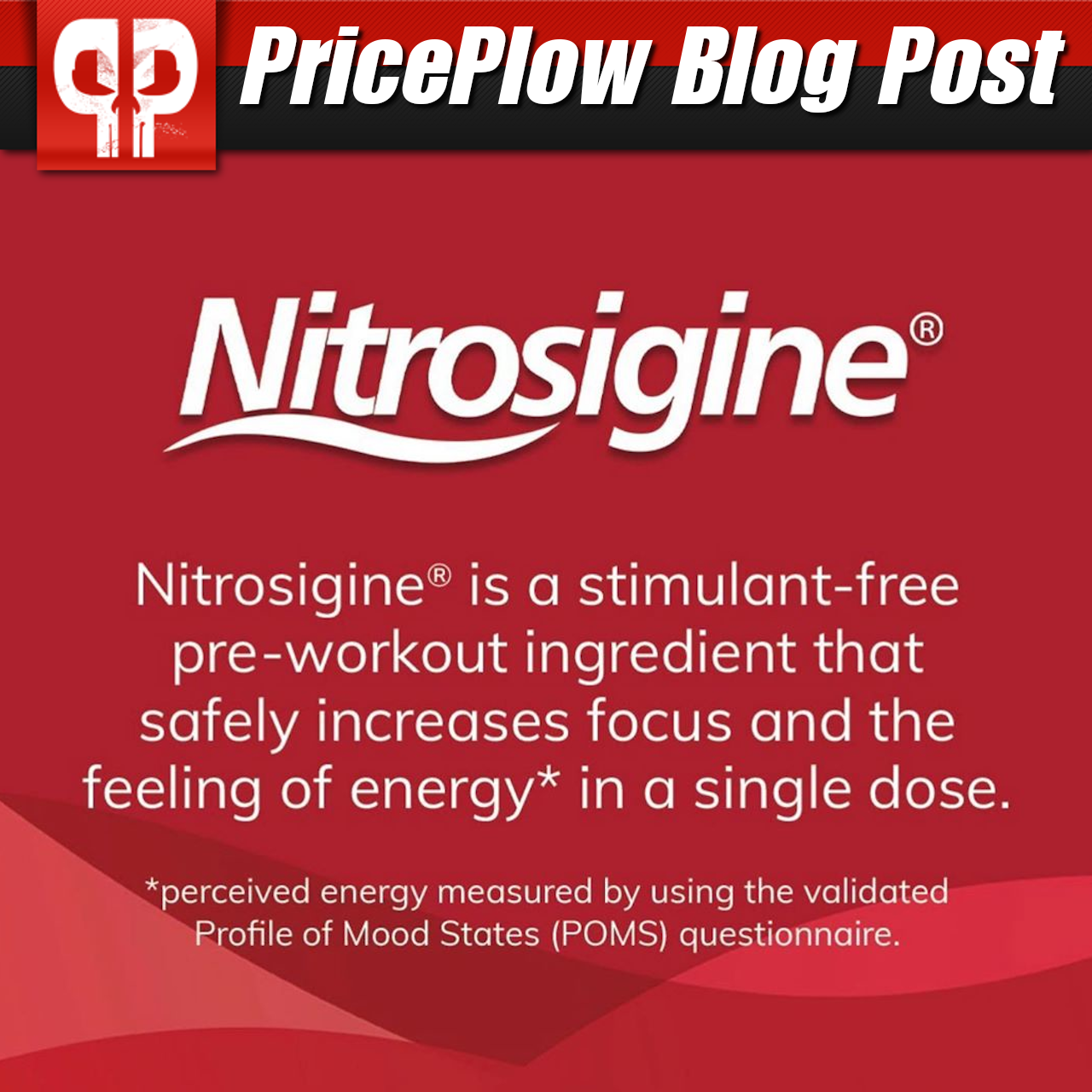
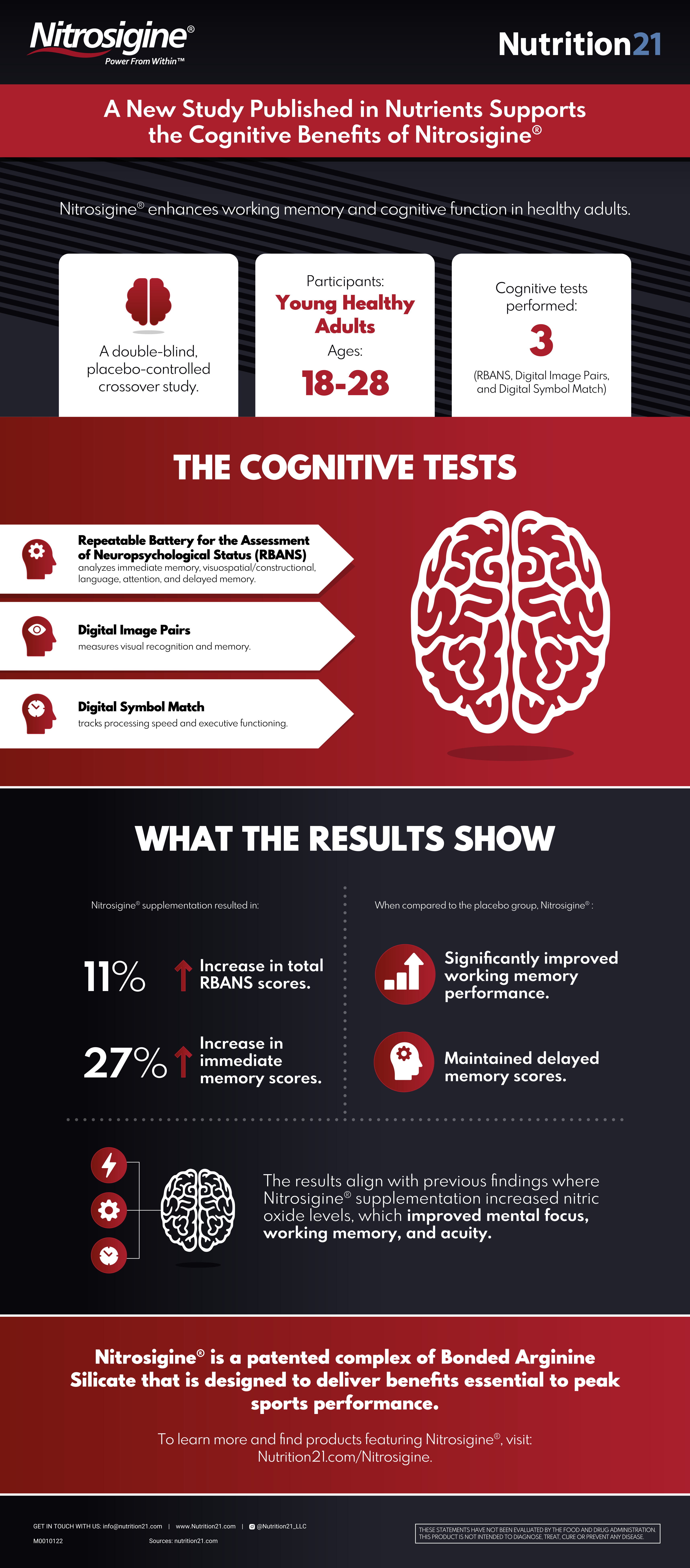
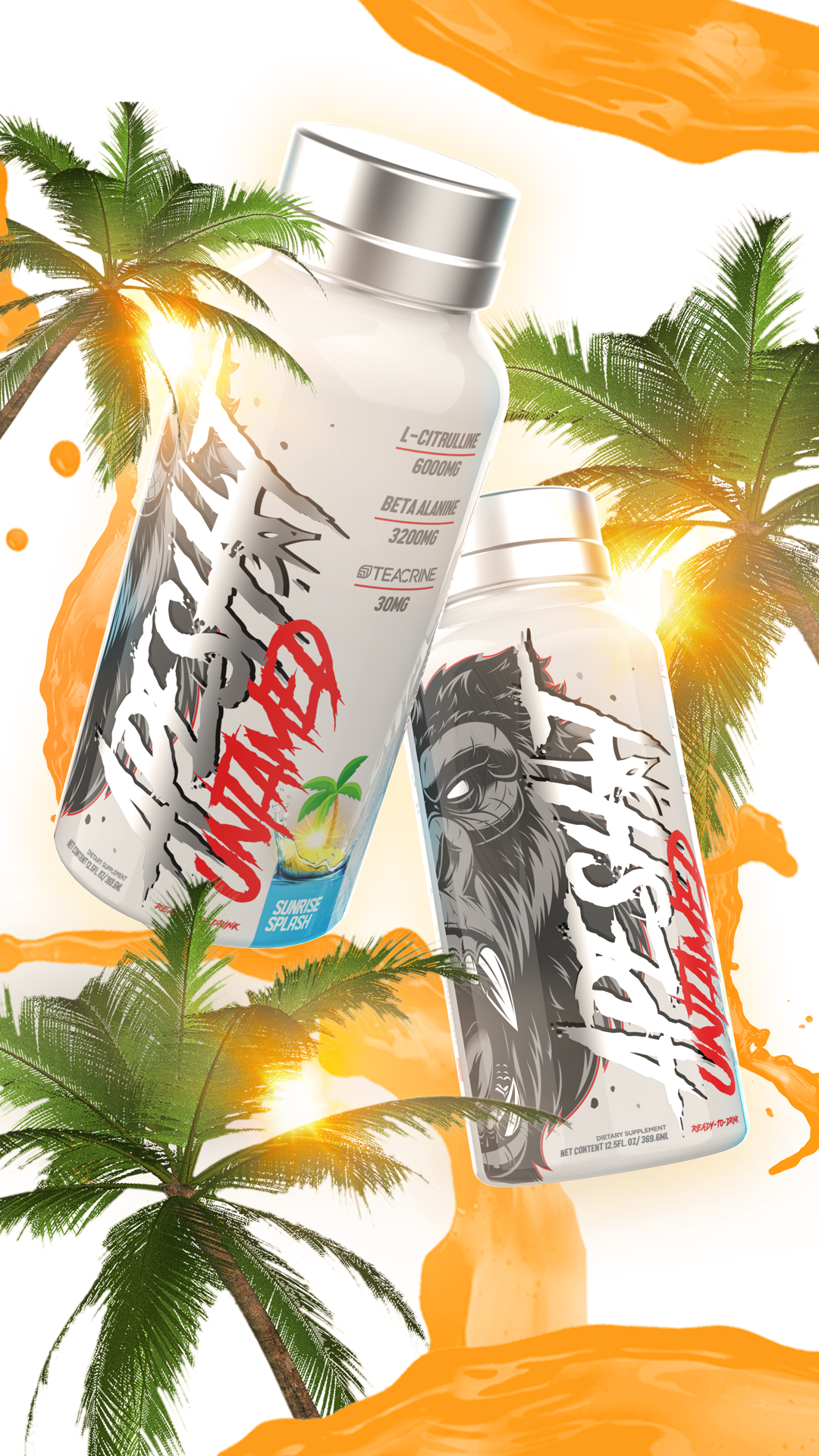
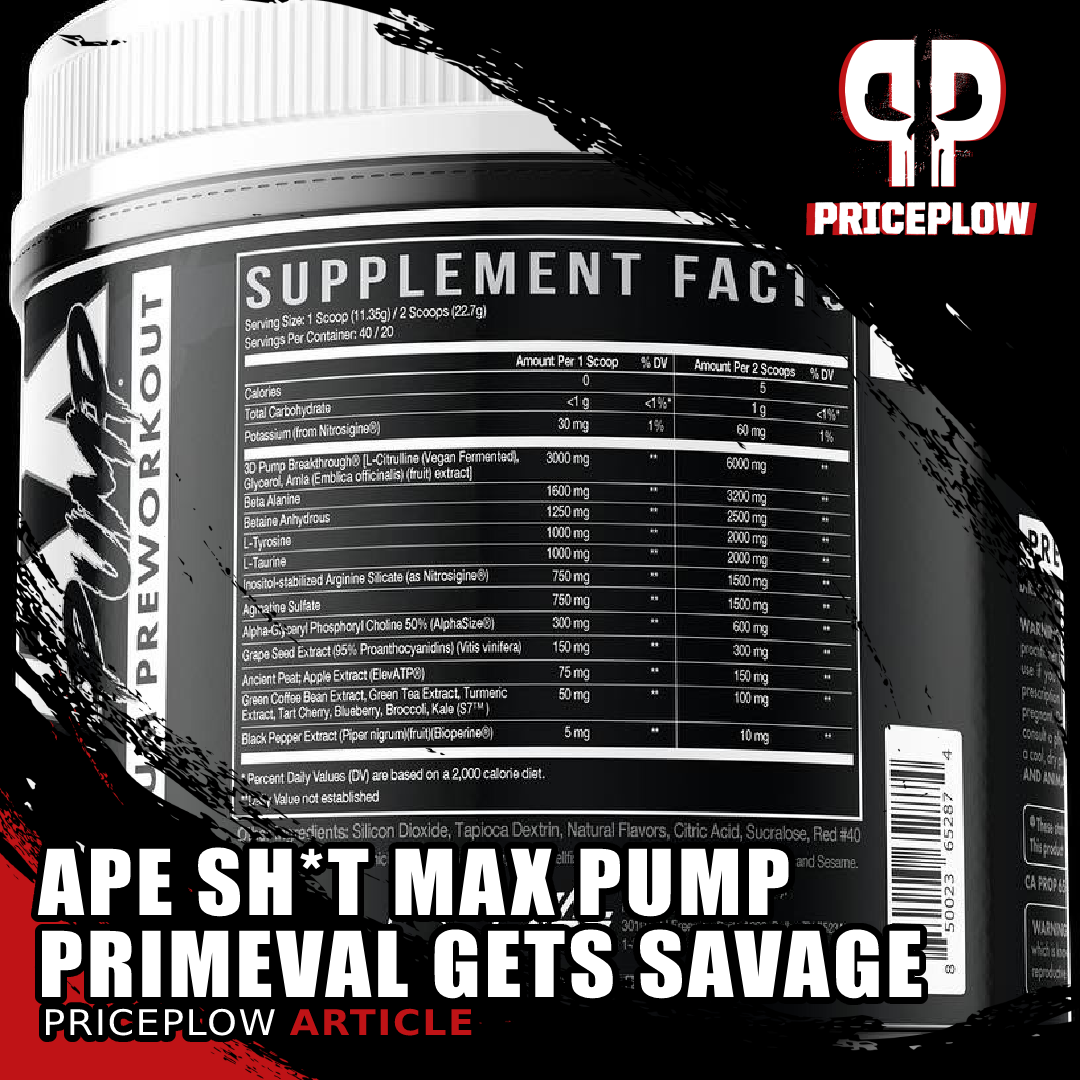



Comments and Discussion (Powered by the PricePlow Forum)